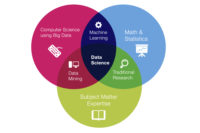Data Mining Can Inform and Improve Packaging Design

Throughout the business, marketing and insights industries, there’s increasing excitement and buzz around the potential for data to transform our world.
But what do terms such as big data, machine learning and artificial intelligence really mean in the context of packaging design? And how can data help us to develop more effective packaging and/or to expedite and improve our processes for doing so?
With these questions in mind, PRS IN VIVO recently revisited our database (of over 20,000 design systems) to see what we could uncover through data mining and by applying a new approach to our analysis.
Fortunately, the results were quite encouraging: We emerged with both specific insights (to guide future design efforts) and a path forward to accurately predicting packaging success, by learning from our experience.
What We Did & Learned: Two Levels of Analysis
Our team approached this meta-analysis (of our database) on two levels:
First, we focused on the linkage between specific performance measures (KPIs) and sales (Purchase from Shelf).
The goal was to dive deeper to understand the relationships between different dimensions and most importantly, to understand which metrics most strongly and consistently drive pick-up and purchase. As expected, this analysis reinforced a key learning from our in-market validation work with clients:
On-shelf behavioral performance measures (visibility and shop-ability) are much more closely linked to sales than attitudinal measures (such as aesthetic appeal, imagery or communication).
Thus, one important point is that any form of data mining (and more advanced machine learning) is most valuable if it is rooted in behavioral data, tied to shoppers’ actions at shelf.
By looking across many studies, we also learned that Visibility (gaining attention within a cluttered shelf) and shopability (shoppers’ ability to quickly and accurately find their desired product) work in very different ways:
- Visibility as a positive driver of sales, which works in a largely linear manner
Simply put, if more people see a product within a cluttered shelf, this increases its likelihood of purchase – and conversely, Unseen is Unsold. And while the linkage between visibility and sales is strongest for smaller brands (with few shelf facings), increasing visual attention always has some positive impact.
- Shopability as a negative driver of sales, which works in a non-linear manner
As many brands have learned from painful experience, confusing people at the shelf is the surest and strongest path to sales declines. However, our analysis showed that Shop-ability works quite differently than visibility: Making a brand a bit faster and easier to shop may not help sales, while a slight decline may not hurt. Instead, there appears to be a confusion threshold (or inflection point) where shoppers become frustrated and walk away.
Next, we explored the connection between specific design elements and different performance measures (visibility, shop-ability, appeal, communication, etc.)
To be specific, we painstakingly coded changes to design elements (logo, color, visuals, structure, claims, etc.), when comparing Proposed design systems to Current packaging. For New Products or Line Extensions, we compared and coded the test packaging systems relative to the existing product line (How does the Line Extension differ from the packaging of the Base brand?).
This new lens allowed us to see connections and sales drivers in a new way. Across many studies and design systems, it revealed some interesting patterns, including:
- Changes to brand identity such as logos and variant descriptors were more strongly correlated with shop-ability problems and sales declines
- Changing these elements appeared likely to confuse shoppers and/or create hesitation at the shelf.
- Changing these elements appeared likely to confuse shoppers and/or create hesitation at the shelf.
- Changes to pack color, visuals and shape were more strongly connected with improvements in visibility and purchase from shelf
- This suggests that design changes need to be significant enough to be noticeable from several feet away, if they are to make a difference in shopping patterns.
- This suggests that design changes need to be significant enough to be noticeable from several feet away, if they are to make a difference in shopping patterns.
- New design systems that included both graphic/structural changes and new claims were more likely to drive sales gains
- This speaks to the importance of linking design and messaging when approaching packaging re-stages.
To be clear, our analysis certainly uncovered cases in which logo changes have improved packaging performance and others in which misguided color changes led to sales declines.
So the idea is not to suggest that effective design can be reduced to a simple formula. In fact, we are well-aware that the same solution is unlikely to work in two very different situations. However, our data mining shows that by learning from experience and identifying patterns, we can better inform design briefs and help marketers avoid making the same mistakes time and again.
What’s Next? From Data Mining to Machine Learning & Predicting Success
While this recent meta-analysis was valuable in identifying guidelines and guardrails for design, it was only a first step and an initial indication of the power of data. In fact, a larger goal is to apply data-driven learning to accurately predict which design systems will be successful in market.
To that end, we are now applying this learning to develop a database-driven process to screen new design systems and identify those most likely for success. The underlying idea is to apply a consistent framework and process to review designs across key KPIs, with ratings and weightings informed by database learning.
This screening system, in turn, will further feed the network and provide more data and learning upon which to develop, enhance and refine a predictive model. This is where data mining transitions into the field of machine learning, in which a system builds knowledge and accuracy through increased experience.
Of course, machine learning and predictive algorithms of this nature are not a full substitute for ultimately testing designs on shelf with shoppers. However, they can potentially be a powerful complement to more traditional research. On one level, data-driven tools will provide nearly instant guidance and feedback and help remove much of the subjectivity impacting design decisions today. If applied properly, these tools may also foster creativity, by allowing for the quick, inexpensive screening of many design directions.
For these reasons, both marketers and designers should embrace the data revolution and potential to learn from experience. Those companies and agencies that do so are likely to be well-rewarded.
Looking for a reprint of this article?
From high-res PDFs to custom plaques, order your copy today!






